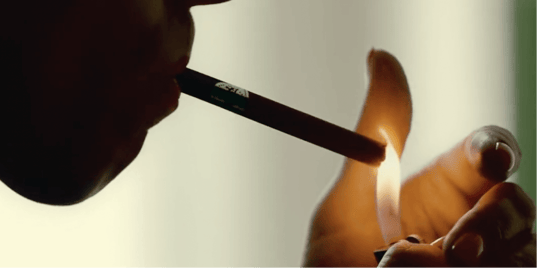We take a long hard look at the, generally speaking, frowned-upon resource, that is stock footage and discovered that there is a way to see it in the glimmer of a new light.
Trawling stock footage libraries has long been one of those jobs most of us would rather avoid. The quality is poor, the performances are cheesy. Or perhaps we’re looking for a fix – something changed in post-production, perhaps the client wanted to add something that hadn’t been covered before. Just one of those classic ‘we’ll fix it in post’ scenarios, and not a great place to find yourself. Most of the time.
In recent years, with the increasing availability of quality equipment at lower and lower prices, alongside more and more access to quality information, there’s been a veritable boom in filmmakers, photographers and drone operators. The growing market has driven quality up, alongside the variety of scenes – whether in action or location.
What does this mean? Stock sites are now fully stocked (excuse the pun) with viable options, that is: genuinely good bits of film.
Nothing underlines the point better than this Tweet from David F. Sandberg, speaking of the sensational new film The Menu. This darkly comedic, striking and disturbing cinematic journey takes an incisive look at some of the worst traits of the human race in a very specific setting, brought to life in part by an all-star cast that features screen stalwart Ralph Fiennes and Golden Globe-winner Anya Taylor Joy.
In the tweet, Sandberg states he read an interview that reveals the critical first shot – 3 seconds that sets the tone for the following 107 minutes, giving us a crucial insight into the character of the movie – is actually stock.

Screengrab of the opening shot of The Menu.
We found the interview in question with the film's DP, Peter Deming, for filmmakermagazine.com:
Filmmaker: Now that we’ve talked about the ending, let’s circle back to the beginning. The first shot is a close-up of Anya Taylor-Joy lighting a cigarette, which we later learn is a big foodie faux pas because it affects your sense of taste.
Deming: That is a stock shot.
Filmmaker: No! Really?
Deming: When I saw the first cut, I was like, “Oh, that’s interesting. They got a stock shot that fit into the movie.” And the more I looked at it, the more I had issues with it. Thematically, it’s a perfect way to start the movie. There are some technical issues with the shot itself, which I won’t bring up, but no one notices it. Even I didn’t notice [those issues] the first two or three times I saw it. It wasn’t until we got into the color correction on the film and I was like, “….wait a minute.” (laughs)
For us purists, this idea is a little shocking. But when we think about it, is the idea of a stock shot making its way into a Hollywood film so abhorrent? We’ve had Wilhelm screams for years – they’re celebrated in some circles.
Whatever the reason for its inclusion – it might be that the planned opening shot for the movie didn’t test well, or just wasn’t sitting right with the director or the studio – it’s just one of the many problems that we come up against all the time in the video production world.
But, instead of arranging a pick-up day, getting down to location and scheduling time in with Anya Taylor-Joy, they chose a stock clip that slots in nicely to the opening scene, cutting perfectly to the next wide shot of the same action. As Peter Deming himself says, he didn’t notice any glaring issues with the shot the first few times he watched it. Of course, once you know, you start to unpick it – the difference in profile between this person and the actor, the location – but our brain doesn’t pick up on these disparities without that prior knowledge. In fact, it seems to fill in the blanks for us and suspension of disbelief takes over.
But this seemingly controversial decision gets us thinking – is stock footage a viable option? In these days of slashing marketing budgets and climate conscious creative approaches, might it actually be beneficial to get close and personal with these stock sites?
Maybe you need some additional establishing context for a new scene - a drone shot of a cityscape, a wide of a car travelling down a country road, a claustrophobic shot of city commuters - surely all of these things are readily available, captured and waiting to be used.
We can argue a case for unique brand identity and directorial style and shot continuity, but if Hollywood can get away with it undetected (until the inside beans spill) then why can’t other productions? As long as you apply the same careful consideration and creative thought process to its selection and integration as you would to any other filmmaker resource or solution we have to hand. It might just be time for the suggestion of ‘stock footage?’ to be met with a curious nod, as opposed to an eye-rolling grimace.



.svg)
